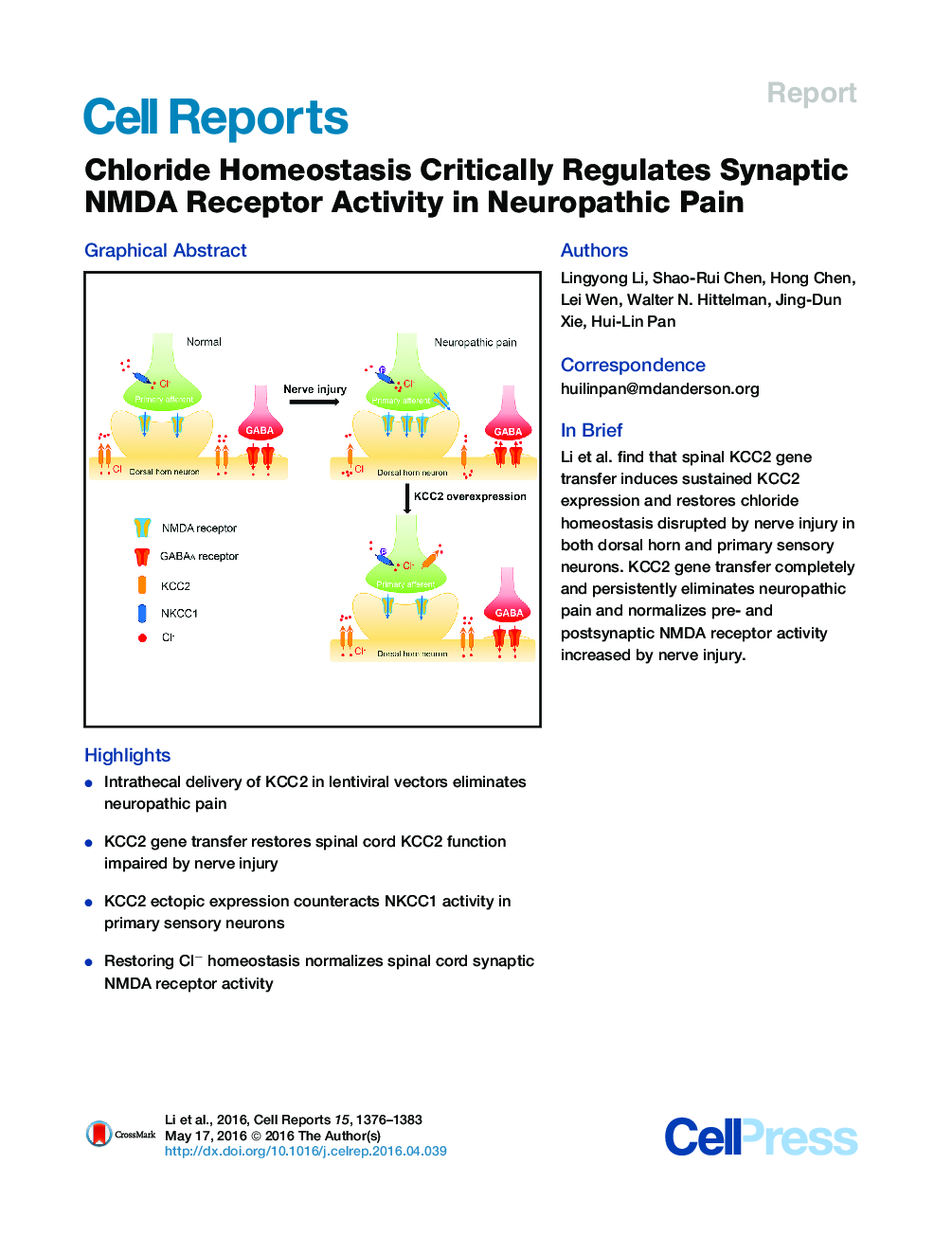| Article ID | Journal | Published Year | Pages | File Type |
|---|---|---|---|---|
| 2039003 | Cell Reports | 2016 | 8 Pages |
•Intrathecal delivery of KCC2 in lentiviral vectors eliminates neuropathic pain•KCC2 gene transfer restores spinal cord KCC2 function impaired by nerve injury•KCC2 ectopic expression counteracts NKCC1 activity in primary sensory neurons•Restoring Cl− homeostasis normalizes spinal cord synaptic NMDA receptor activity
SummaryChronic neuropathic pain is a debilitating condition that remains difficult to treat. Diminished synaptic inhibition by GABA and glycine and increased NMDA receptor (NMDAR) activity in the spinal dorsal horn are key mechanisms underlying neuropathic pain. However, the reciprocal relationship between synaptic inhibition and excitation in neuropathic pain is unclear. Here, we show that intrathecal delivery of K+-Cl− cotransporter-2 (KCC2) using lentiviral vectors produces a complete and long-lasting reversal of pain hypersensitivity induced by nerve injury. KCC2 gene transfer restores Cl− homeostasis disrupted by nerve injury in both spinal dorsal horn and primary sensory neurons. Remarkably, restoring Cl− homeostasis normalizes both presynaptic and postsynaptic NMDAR activity increased by nerve injury in the spinal dorsal horn. Our findings indicate that nerve injury recruits NMDAR-mediated signaling pathways through the disruption of Cl− homeostasis in spinal dorsal horn and primary sensory neurons. Lentiviral vector-mediated KCC2 expression is a promising gene therapy for the treatment of neuropathic pain.
Graphical AbstractFigure optionsDownload full-size imageDownload as PowerPoint slide
